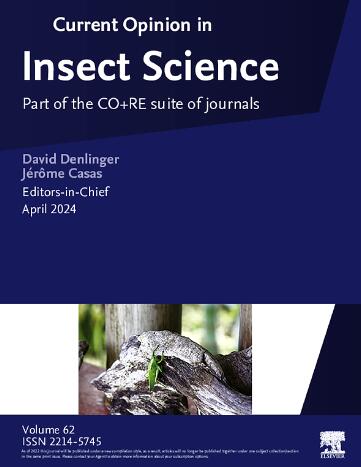Herbivory by multiple arthropods does not hinder the attraction of natural enemies to plant volatiles: insights from a meta-analysis
IF 4.8
1区 农林科学
Q1 BIOLOGY
引用次数: 0
Abstract
Plants under herbivore attack emit herbivore-induced plant volatiles (HIPVs) that recruit natural enemies (NEs) of the herbivores for defense. The composition of HIPVs is often specific to the herbivore species, and infestation by multiple herbivore species produces a distinct volatile blend compared to single infestations, potentially influencing tritrophic interactions. Although two decades of research have investigated how multiple herbivory can affect chemically mediated tritrophic interactions, a comprehensive understanding on this topic remains elusive, as studies have shown varying results depending on the system examined. We performed a quantitative synthesis of 29 studies, extracting effect sizes from 94 experiments that assessed the olfactory preferences of NEs for HIPVs emitted from multiple-infested and single-infested plants. Our analysis revealed that multiple infestations do not affect the attractiveness of HIPVs to NEs, regardless of whether the plant is infested by nonhosts, hosts from different or the same feeding guild, the NE dietary specialization, or guild. However, specialist NEs prefer HIPVs emitted from plants with hosts even if they are infested by multiple herbivores over those infested by only a single nonhost herbivore. Our meta-analysis provides valuable insights into the complexity of chemically mediated tritrophic interactions, demonstrating that the coinfestation with nonhosts or multiple hosts do not affect attractiveness of HIPVs to NEs.
多种节肢动物的食草性并不妨碍天敌对植物挥发物的吸引力:来自荟萃分析的见解。
植物受到食草动物的攻击时,会释放出食草动物诱导的植物挥发物(herbivore-induced plant volativers, HIPVs),招募食草动物的天敌(natural enemies)进行防御。hipv的组成通常是食草动物特有的,与单一侵染相比,多种食草动物侵染会产生明显的挥发性混合物,可能会影响营养相互作用。尽管二十年的研究已经调查了多种草食如何影响化学介导的营养相互作用,但对这一主题的全面理解仍然是难以捉摸的,因为研究表明不同的结果取决于所检查的系统。我们对29项研究进行了定量综合,从94项实验中提取了效应量,这些实验评估了NEs对多病和单病植物释放的hivs的嗅觉偏好。我们的分析表明,无论植物是否被非寄主、来自不同或相同摄食行会的寄主、摄食专业化行会或行会侵染,多次侵染都不会影响hipv对新植物的吸引力。然而,专业的NEs更喜欢从有宿主的植物中释放出hipv,即使它们被多种食草动物侵染,而不是只被单一非宿主食草动物侵染的植物。我们的荟萃分析为化学介导的营养相互作用的复杂性提供了有价值的见解,表明与非宿主或多个宿主的共同侵染不会影响hipv对NEs的吸引力。
本文章由计算机程序翻译,如有差异,请以英文原文为准。
求助全文
约1分钟内获得全文
求助全文
来源期刊

Current opinion in insect science
BIOLOGYECOLOGYENTOMOLOGY-ECOLOGY
CiteScore
10.40
自引率
1.90%
发文量
113
期刊介绍:
Current Opinion in Insect Science is a new systematic review journal that aims to provide specialists with a unique and educational platform to keep up–to–date with the expanding volume of information published in the field of Insect Science. As this is such a broad discipline, we have determined themed sections each of which is reviewed once a year.
The following 11 areas are covered by Current Opinion in Insect Science.
-Ecology
-Insect genomics
-Global Change Biology
-Molecular Physiology (Including Immunity)
-Pests and Resistance
-Parasites, Parasitoids and Biological Control
-Behavioural Ecology
-Development and Regulation
-Social Insects
-Neuroscience
-Vectors and Medical and Veterinary Entomology
There is also a section that changes every year to reflect hot topics in the field.
Section Editors, who are major authorities in their area, are appointed by the Editors of the journal. They divide their section into a number of topics, ensuring that the field is comprehensively covered and that all issues of current importance are emphasized. Section Editors commission articles from leading scientists on each topic that they have selected and the commissioned authors write short review articles in which they present recent developments in their subject, emphasizing the aspects that, in their opinion, are most important. In addition, they provide short annotations to the papers that they consider to be most interesting from all those published in their topic over the previous year.
 求助内容:
求助内容: 应助结果提醒方式:
应助结果提醒方式:


